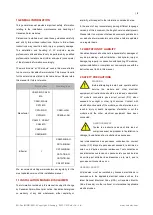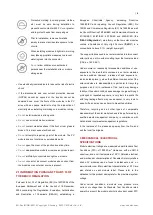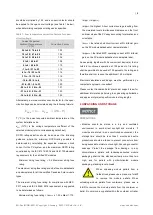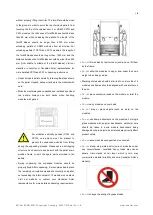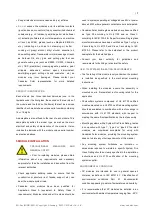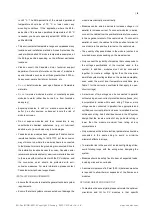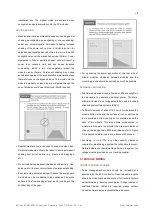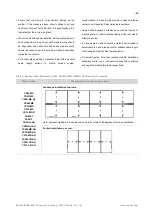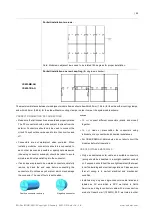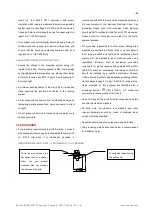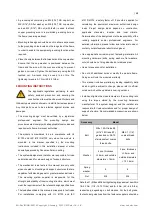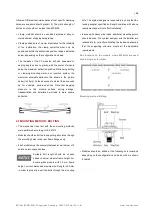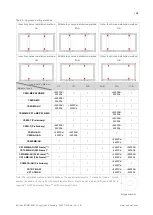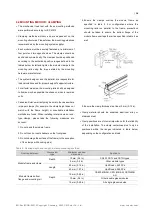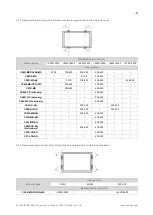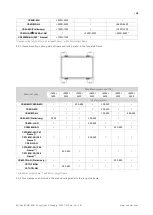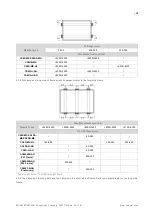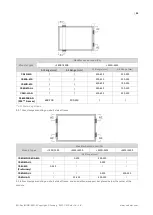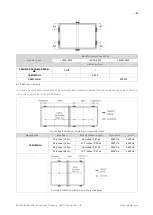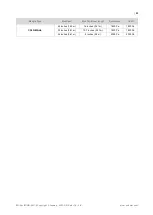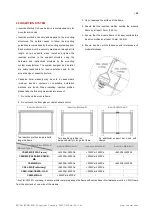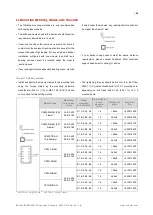
| 9
EN-Rev IM/GN-EN/1.0 Copyright © January, 2023. CSI Solar Co., Ltd.
installation site. The highest yields are achieved when
sunlight shines perpendicularly onto the PV modules.
AVOID SHADING
Modules shall not be permanently shaded (including partial
shading, spot shading, even shading or uneven shading)
under any circumstances. Permanent shading includes
shading of the same cell, cell row, or module portion for
extended and repeated periods of time (e.g. more than 200
daylight hours over the warrantied service lifetime). Power
dissipated in fully or partially shaded cells will result in
power loss, reduced yield and can cause localized
overheating, which in turn may negatively impact the
module service lifetime. Permanent shading may cause
accelerated ageing of the encapsulation material and place
thermal stress on the bypass diodes. This would void the
module’s warranty unless properly mitigated through the
use of Module Level Power Electronic (MLPE) devices.
Regular maintenance is required to keep modules clean.
Particular measures should be taken to avoid permanent
shading from dirt or debris (e.g., plants, bird droppings,
etc.).
Do not install modules directly behind any object (e.g., tree,
antenna, etc.) to prevent occurrence of permanent shading.
Even temporary partial shading will reduce the energy yield.
A module can be considered to be unshaded if its entire
surface is free from shading all year round, including on the
shortest day of the year.
For optimizing the power generation of the rear side of
bifacial modules, obstacles between modules and the
mounting ground should be avoided as much as possible.
RELIABLE VENTILATION
Bifacial modules use direct, reflected, or diffuse sunlight on
the backside to generate additional power. Therefore,
bifacial modules are not suggested to be used in building
attached photovoltaic systems (BAPV).
Sufficient clearance of at least 10.2 cm (4.0 in) between the
module bottom side and the surface of roof or wall needs
to be provided to allow cooling air to circulate around the
back of the module. This also allows condensation or
moisture to dissipate. In particular, the minimum clearance
of any modules applied in BWh area (please refer to Figure
A.3) should be determined in accordance with annex A.
According to UL 61730, any other specific clearance
required for maintaining a system fire rating should prevail.
Detailed clearance requirements pertaining to system fire
ratings must be provided by your racking supplier.
5.1 MODULE WIRING
CORRECT WIRING SCHEME
Cable management scheme should be reviewed and
approved by the EPC contractor. Required cable lengths
should be cross-checked and account for tracker structure
particularities e.g. bearing house gaps. If longer cables or
additional jumper cables are required, please contact
Canadian Solar’s sales representative in advance.



